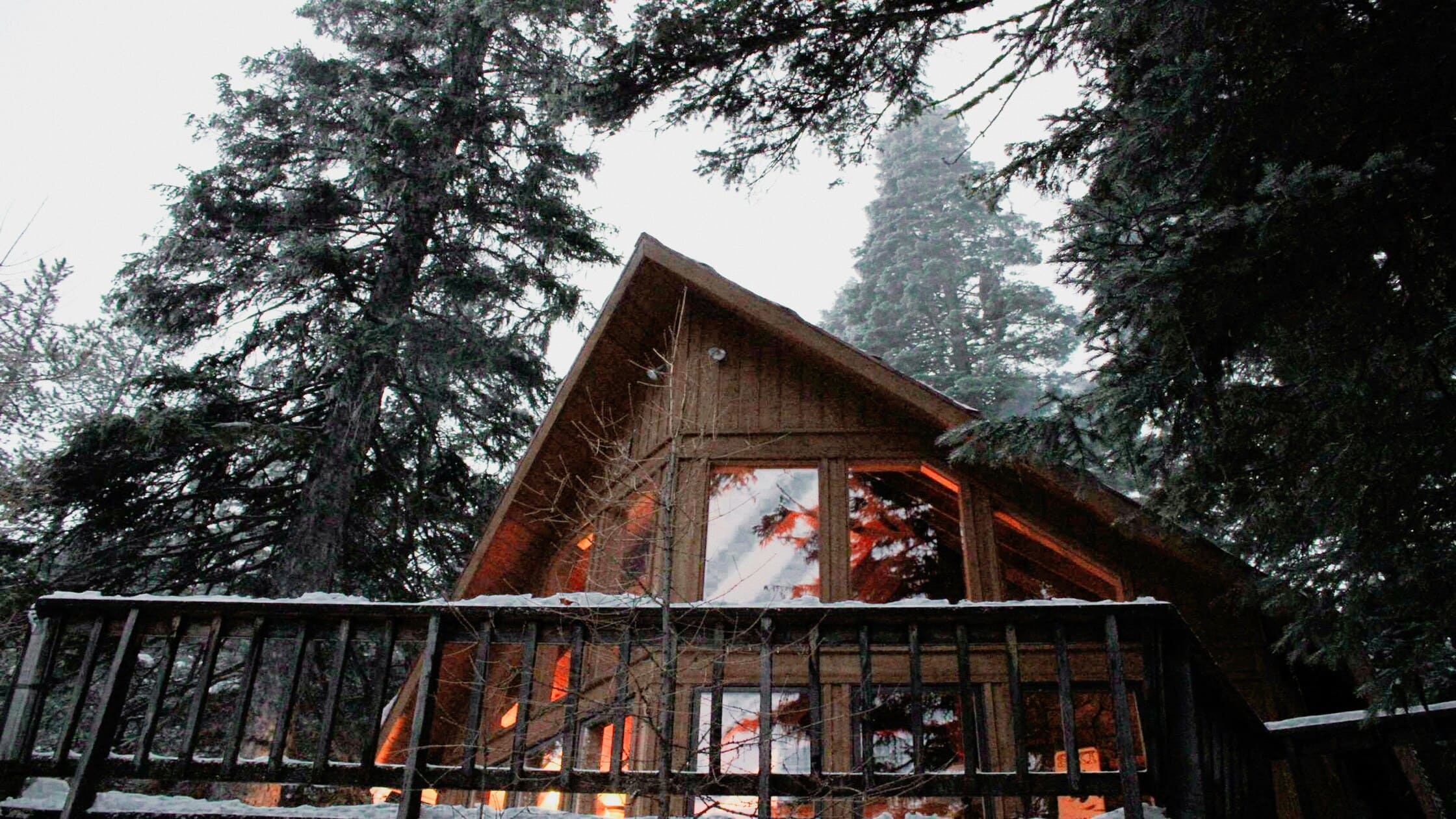In the rugged landscapes of Idaho, property laws have evolved to address both long-term occupancy and the rights of property owners. Idaho squatter rights are at the center of ongoing debates involving adverse possession, eviction procedures, and legislative updates.
In this guide, we break down everything you need to know about Idaho squatter rights—from what they mean and how they’re established to the legal remedies available for property owners.
Before diving into the details, review the quick facts table below. It outlines essential information related to security deposits and other rental property criteria that often play a role in landlord-tenant disputes.

Quick Facts Table About Idaho Squatter Rights and Other Renting Issues
What are squatters' rights in Idaho?
Idaho squatter rights refer to the legal protections and potential claims that unauthorized occupants might eventually obtain. Often tied to the doctrine of adverse possession, these rights mean that if a squatter occupies a property openly and continuously for a statutory period, they might acquire legal title.
Questions like “Does Idaho have squatter rights?” and “What is a squatter law?” frequently arise among property owners and would‐be occupants alike. Key points include:
- Open Possession: Squatters must occupy the property visibly.
- Hostile Claim: The occupation must be without the owner’s permission.
- Continuous Residency: A long, uninterrupted period—often 15 to 20 years—is required.
- Public Notice: The squatter’s presence must be apparent to neighbors and local authorities.
Understanding these principles is critical for both those wondering “what to do if a squatter moves into your house” and for legal experts advising on adverse possession Idaho cases.
Idaho’s 2025 Legislative Updates on Squatters & Property Laws
The Idaho legislature has made significant changes in 2025 to clarify Idaho squatter rights and streamline eviction and adverse possession procedures. Recent updates include:
- Enhanced Owner Notifications: Landlords are now required to receive quicker alerts regarding unauthorized occupancy.
- Revised Timeframes: The continuous possession period necessary for adverse possession has been more clearly defined.
- Increased Penalties: New fines and sanctions aim to discourage unauthorized occupation, addressing concerns such as states without squatters' rights and comparing Idaho’s policies to states with shortest squatters' rights.
These updates impact both property owners and squatters. They help to balance the right to use abandoned properties—such as abandoned houses for sale in Idaho by owner—with robust landlord protections.
Squatting vs. Trespassing in Idaho: What’s the Difference?
A key aspect of Idaho squatter rights is understanding the distinction between squatting and trespassing. While both involve unauthorized entry, the legal implications differ significantly.
How Idaho law defines squatting vs. trespassing
- Squatting: In Idaho, squatting involves prolonged, open, and notorious occupation with the potential for eventual legal claim via adverse possession. This is at the heart of Idaho squatter rights.
- Trespassing: Trespassing occurs when someone unlawfully enters a property without any intent to establish residency or claim ownership. Idaho trespassing laws are designed to prevent this behavior immediately.
Can you shoot someone for trespassing in Idaho?
A common query is, can you shoot someone for trespassing in Idaho? The answer is unequivocally no. While Idaho law provides robust protections for property owners, the use of deadly force is not justified merely for trespassing. Legal remedies must be pursued through the courts rather than by resorting to violence.
When does squatting become illegal?
Squatting becomes illegal when the occupant fails to meet the strict requirements for adverse possession or when the property owner successfully enforces eviction. Continued occupation can be swiftly addressed once the necessary legal processes have been initiated.
Comparison table: Squatting vs. Trespassing in Idaho
How Long Does It Take for a Squatter to Gain Rights in Idaho?
For a squatter to establish Idaho squatter rights, they must meet a continuous occupation period defined by state law. In Idaho, this period typically ranges from 15 to 20 years. During this time, the occupation must be:
- Open and Notorious: Clearly visible to anyone, including the property owner.
- Exclusive: The squatter must act as the sole possessor.
- Hostile: The occupation is without the owner’s consent.
- Continuous: No significant interruptions should occur.
This long timeframe underscores why many property owners ask, what to do if a squatter moves into your house and why prompt legal action is essential.
Adverse Possession in Idaho: Can a Squatter Claim Ownership?
Adverse possession is the legal mechanism by which Idaho squatter rights may eventually convert an unauthorized occupation into legal ownership.
What is adverse possession in Idaho?
Adverse possession in Idaho requires that a squatter:
- Occupies the property openly and continuously.
- Maintains exclusive possession without the permission of the owner.
- Fulfills the statutory period, which is typically 15 to 20 years.
- Acts in a manner that implies ownership, such as making improvements or paying property taxes.
Legal requirements for squatters to claim ownership
For a squatter to succeed under adverse possession:
- They must document continuous occupation.
- Evidence of property maintenance or improvements can strengthen their claim.
- Legal actions, such as filing a claim in court, may be necessary to formalize ownership.
- The process is closely related to questions about “Does Idaho have squatters rights?” and adverse possession Idaho.
Evicting a Squatter in Idaho: A Landlord’s Legal Guide (2025 Update)

For property owners facing unwanted occupancy, understanding how to remove a squatter is critical. The must-have eviction process for Idaho squatter rights cases involves a series of legal steps designed to protect both parties' rights.
The step-by-step process for removing squatters legally
- Verification: Determine if the occupant qualifies as a squatter rather than a tenant.
- Issuance of Notice: Serve a formal notice to quit, adhering strictly to Idaho’s legal requirements.
- Filing for Eviction: If the squatter does not vacate voluntarily, file an eviction lawsuit.
- Court Proceedings: Attend a hearing where evidence of unauthorized occupancy is presented.
- Enforcement: Once a court order is granted, coordinate with law enforcement to remove the squatter.
Required notices and legal procedures
Key legal steps include:
- Proper Notification: The notice must include clear details and be served in a legally acceptable manner.
- Documentation: Maintain records of all communications and evidence of unauthorized occupancy.
- Compliance with Idaho End-of-Tenancy Laws: These laws may affect the eviction process, ensuring due process for both parties.
What to do if a squatter refuses to leave?
In cases where a squatter remains despite legal notices:
- Seek a court order for forcible removal.
- Avoid using self-help methods that could violate Idaho trespassing laws.
- Consult with an attorney to ensure all procedures are correctly followed.
Idaho’s end-of-tenancy laws and their impact on evictions
These laws outline the proper procedures for ending a tenancy, even if the occupant is a squatter. Landlords must strictly adhere to these guidelines to avoid legal repercussions and ensure a smooth eviction process.
Abandoned Property in Idaho: What Landlords Need to Know
Understanding the status of Idaho’s abandoned property is crucial for managing Idaho squatter rights issues. Landlords and property owners must be aware of the legal definitions and procedures for reclaiming abandoned units.
What qualifies as abandoned property in Idaho?
In Idaho, a property may be considered abandoned if:
- It has been unoccupied for an extended period.
- There is evidence that the owner has relinquished interest.
- Legal notices have been issued without response.
How to legally reclaim an abandoned home?
Steps include:
- Conducting a thorough investigation to confirm abandonment.
- Initiating legal proceedings to reclaim the property.
- Following proper notices and documentation protocols as required by Idaho law.
Idaho laws on landlord responsibilities for abandoned units
Landlords must:
- Maintain proper documentation of abandonment.
- Adhere to local and state regulations regarding vacant properties.
- Ensure that their actions comply with Idaho squatter rights and related statutes.
Idaho Homesteading Laws: Do They Impact Squatter Rights?
Historically, homesteading laws provided a pathway for settlers to claim property. Today, these principles still echo in the context of Idaho squatter rights. Although modern adverse possession laws now govern such claims, understanding Idaho homesteading laws can provide a useful context for the evolution of property rights in the state.
Protecting Your Property from Squatters: Prevention Tips for Landlords

Prevention is key to avoiding disputes over Idaho squatter rights. Here are some practical tips for securing your property:
How to secure vacant properties against unauthorized occupancy
- Regular Inspections: Frequent visits deter potential squatters.
- Enhanced Security Measures: Install surveillance cameras, alarms, and proper locks.
- Clear Signage: Post “No Trespassing” signs in visible locations to reinforce property boundaries.
The role of rental agreements in preventing squatting
- Clear Contract Terms: Ensure lease agreements detail occupancy rules and consequences for unauthorized subletting.
- Strict Enforcement: Regularly review and enforce lease terms to prevent misuse of the property.
Idaho landlord-tenant responsibilities and legal rights
- Stay Informed: Keep up-to-date with the latest changes in Idaho squatter rights and adverse possession laws.
- Legal Preparedness: Consult with legal professionals to ensure your rental practices meet state requirements and protect your property.
Summary
Idaho squatter rights represent a complex interplay between long-term occupancy, adverse possession, and landlord protections. This guide has explored what squatters’ rights mean in Idaho, the recent legislative updates of 2025, and the critical differences between squatting and trespassing.
We’ve detailed the legal timeframe necessary for establishing squatter rights, the rigorous process of adverse possession, and step-by-step instructions for evicting unauthorized occupants.
For anyone wondering “how to evict a squatter in Idaho?” or grappling with questions such as “Does Idaho have squatters’ rights?” and “What to do if a squatter moves into your house?”, this guide offers clear, actionable insights.
By following the legal procedures and staying informed about legislative changes, both landlords and squatters can navigate the complexities of property law in Idaho with greater confidence. To learn more about renting and squatting in the States, don’t hesitate to visit the LeaseRunner.
FAQs
Q1. Can you shoot someone for trespassing in Idaho?
No, the use of deadly force is not justified solely for trespassing under Idaho law.
Q2. What to do if a squatter moves into your house?
Act promptly by notifying law enforcement, serving legal notices, and seeking legal counsel to initiate eviction proceedings.
Q3. When did squatters’ rights become a thing?
The concept has evolved over centuries, with modern adverse possession doctrines formalizing what is now recognized as Idaho squatter rights.
Q4. What are Idaho trespassing laws?
They provide immediate remedies against unauthorized entry, differentiating short-term trespassers from those aiming to claim ownership through prolonged occupation.



